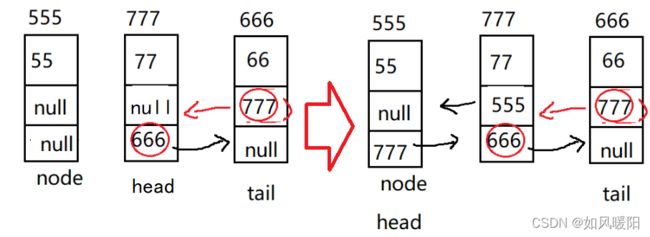- 《Hello 算法》火了!!!一本写给算法初学者的入门算法书籍
遇码
分享算法hellohello算法算法书籍
曾经也放出豪言壮语,决心要刷遍力扣上的所有算法题目。然而现实就很快啪啪的打脸。不知道多少人和我有过一样的经历。在读到《Hello算法》的序中,作者靳宇栋给了我们一个“台阶”。随后就表达了针对我们的现状,他特地写了《Hello算法》这本书,代表广大算法初学者表示感激涕零。《Hello算法》为什么适合入门动画图解、一键运行的数据结构与算法教程全书采用动画图解,内容清晰易懂、学习曲线平滑,引导初学者探索
- Java中卫语句的设计思想
而为.
java服务器开发语言
卫语句(GuardClauses)是一种通过提前返回简化条件嵌套、提升代码可读性的编程技巧。其核心思想是优先处理异常或边界情况,让主逻辑保持扁平化。以下是deepseek做出的设计思想详解:核心设计原则FailFast(快速失败)在函数入口处立即检查非法参数或无效状态,若不符合条件则提前终止(如返回、抛异常),避免后续无效操作。减少嵌套层级用卫语句替换多层if-else嵌套,将代码从“箭头型”结构
- Java进阶 面试速记
登陆成功200
JAVA进阶开发语言java
注解注解@Override类似一个标签,作用在方法上,表示此方法是从父类中重写而来注解是java中的标注方式,可以最用在类,方法,变量,参数成员上在编译期间,会被编译到字节码文件中,运行时通过反射机制获得注解内容,进行解析.内置注解java中内定好的注解例如@Override@Deprecated-标记过时方法。如果使用该方法,会报编译警告。@SuppressWarnings-指示编译器去忽略注解
- 手写promise ,实现 then ,catch,finally,resolve,reject,all,allSettled
会飞的鱼先生
前端javascript开发语言
完整代码原生Promise的用法1.Promise是JavaScript中用于处理异步操作的重要工具。它代表了一个异步操作的最终完成或失败,并且使异步方法可以像同步方法那样返回值。resolve:当异步操作成功时调用的函数,用于将Promise的状态改为fulfilled,并将结果值传递给后续的.then()方法。reject:当异步操作失败时调用的函数,用于将Promise的状态改为reject
- Java单例模式【懒汉式&&饿汉式】
ice-Hamster
Java学习单例模式javaeclipse学习经验分享
目录一、单例模式的解释二、实现方法2.1饿汉式2.1.1饿汉式的实现代码2.2懒汉式2.2.1懒汉式的实现代码三、单例设计模式的好处3.1单例模式的应用场景一、单例模式的解释所谓类的单例设计模式,就是采用一定的方法保证在整个的软件系统中,对某个类只能存在一个对象实例。并且该类只提供一个取得其对象实例的方法。(简单来说,在整个的软件系统中,对某个类只能存在一个对象实例)二、实现方法单例设计模式的实现
- 微信小程序的旅游服务助手 景点 酒店 旅游规划的设计与实现
QQ1304979694
微信小程序旅游小程序
文章目录具体实现截图本项目支持的技术语言研究思路、方法和步骤本系统开发思路主要软件与实现手段系统可行性分析源码获取详细视频演示:文章底部获取博主联系方式!!!!java类核心代码部分展示微信小程序技术现状源码获取/详细视频演示具体实现截图本项目支持的技术语言前端开发框架:vue.js+uniapp数据库mysql版本不限微信开发者工具/hbuiderx数据库工具:Navicat/SQLyog等都可
- Java单例设计模式(懒汉式和饿汉式)
俺是凡人很好
java设计模式开发语言
一、什么是单例设计模式概念:java中单例模式是一种常见的设计模式,单例模式的写法有好几种,这里主要介绍俩种:懒汉式单例、饿汉式单例。单例模式有以下特点:1、单例类只能有一个实例。2、单例类必须自己创建自己的唯一实例。3、单例类必须给所有其他对象提供这一实例。单例模式确保某个类只有一个实例,而且自行实例化并向整个系统提供这个实例。在计算机系统中,线程池、缓存、日志对象、对话框、打印机、显卡的驱动程
- java队列实现限流_如何使用队列实现微服务限流算法?
纽太普
java队列实现限流
队列在平时开发中可能是出现频率最高的数据结构之一了,但是大部分情况下,我们都是用别人已经实现好的,比如kafka,比如redis里的list,以至于让人怀疑为什么还要去学习队列呢?希望今天的内容可以给你一些启发。什么是队列为了整个文章的完整性,我们还是来介绍一下什么是队列。我们举个生活中常见的案例,假设你在周杰伦的奶茶店买奶茶,由于人很多,为了保持公平和秩序,你被要求排队,最先来的人排到最前面,这
- Spring的JavaWeb三层架构
可问 可问春风
JAVASSM框架spring架构java
Spring三层架构的核心注解及协作在Spring的JavaWeb三层架构中,通过分层注解实现职责分离和组件管理,各层(表现层、业务层、数据访问层)的协作基于组件扫描和依赖注入(DI)机制。以下是各层的核心注解及其协作关系:1.分层架构与对应注解层级职责注解关联技术表现层处理用户请求,返回响应@Controller/@RestControllerSpringMVC,RESTfulAPI业务层实现业
- Java面试宝典,kafka优先级队列
m0_57081324
程序员java经验分享面试
为什么要分库分表?首先回答一下为什么要分库分表,答案很简单:数据库出现性能瓶颈。用大白话来说就是数据库快扛不住了。数据库出现性能瓶颈,对外表现有几个方面:大量请求阻塞在高并发场景下,大量请求都需要操作数据库,导致连接数不够了,请求处于阻塞状态。SQL操作变慢如果数据库中存在一张上亿数据量的表,一条SQL没有命中索引会全表扫描,这个查询耗时会非常久。存储出现问题业务量剧增,单库数据量越来越大,给存储
- 深入理解 JSON.stringify:优雅输出 JSON 数据
天天进步2015
前端开发json
在JavaScript开发中,JSON数据的处理是一项基础且关键的技能。JSON.stringify()方法作为将JavaScript对象转换为JSON字符串的标准工具,其功能远不止于简单的数据转换。本文将深入探讨JSON.stringify()的使用技巧、参数配置以及常见陷阱,帮助开发者更优雅地处理JSON数据输出。基础用法JSON.stringify()的基本语法如下:JSON.stringi
- JavaScript的函数拦截技术详解
天天进步2015
前端开发javascript开发语言ecmascript
引言在JavaScript的世界里,函数是一等公民。它们可以被赋值给变量,作为参数传递,甚至可以被动态修改。函数拦截(FunctionInterception)是一种强大的技术,允许开发者在不修改原始函数代码的情况下,拦截、监控和修改函数的行为。本文将深入探讨JavaScript函数拦截的各种技术、应用场景以及最佳实践。什么是函数拦截?函数拦截是指在函数执行前、执行中或执行后插入自定义逻辑的过程。
- 【001安卓开发方案调研】之Java+Gradle+XML 原生安卓开发
ThinkPet
移动app开发androidjavaxml
基于2025年国内安卓开发领域的最新动态,结合Java+Gradle+XML技术组合的生态发展,以下是综合分析:一、技术成熟度评估1.核心架构稳定性Java语言基础作为安卓开发官方支持语言,Java在国内拥有超过15年的技术积累,字节码编译机制与安卓ART虚拟机的深度适配,使其在内存管理、多线程处理等场景表现稳定。主流应用如微信、支付宝均保留Java核心模块。Gradle构建体系Gradle8.5
- Golang可选参数实践
yzh_1346983557
golang可选参数
背景:go不支持类似java的方法重载,但对于函数的可选参数和默认参数配置,通常要在不影响不破坏现有逻辑基础上进行参数的添加。实现:通过options选项,使用函数进行参数的初始化和可选值的设置。代码:packagemainimport"fmt"//go实现可选参数实践//背景:go不支持方法重载,但对于函数的可选参数和默认参数配置,通常要在不影响不破坏现有逻辑基础上进行参数的添加//实现:通过o
- 麒麟服务器操作系统Redis部署手册
太极淘
麒麟操作系统管理工具服务器redis运维
软件简介Redis****介绍REmoteDIctionaryServer(Redis)是一个由SalvatoreSanfilippo写的key-value存储系统,是跨平台的非关系型数据库。Redis是一个开源的使用ANSIC语言编写、遵守BSD协议、支持网络、可基于内存、分布式、可选持久性的键值对(Key-Value)存储数据库,并提供多种语言的API。Redis通常被称为数据结构服务器,因为
- JavaScript常用函数测试demo
sunny05296
JavaScriptjavascript开发语言ecmascript
JavaScript常用函数测试demovimJavaScriptTestDemo.html内容如下:JavaScriptfunctionstestdemoEnterF12toviewtheconsoleoutputmessageofconsole.log()EnterF5torefresh//JavaScriptint2string/string2inttestfunctiontest01(){
- 零基础上手Python数据分析 (7):Python 面向对象编程初步
kakaZhui
python数据分析excel
写在前面回顾一下,我们已经学习了Python的基本语法、数据类型、常用数据结构和文件操作、异常处理等。到目前为止,我们主要采用的是面向过程(ProceduralProgramming)的编程方式,即按照步骤一步一步地编写代码,解决问题。这种方式对于简单的任务已经足够,但当程序变得越来越复杂,代码量越来越大时,面向过程编程可能会显得力不从心,代码难以组织、复用和维护。代码复杂性带来的挑战:面向过程v
- JVM 的类加载机制原理
冰糖心书房
JVM2025Java面试系列java
JVM的类加载机制是指JVM将.class文件(包含Java字节码)加载到内存,并对其进行校验、解析、初始化,最终转换为JVM可以直接使用的Java类型的过程。类加载过程(5个阶段):加载(Loading):查找并加载类的二进制数据:通过类的全限定名(FullyQualifiedName)查找.class文件。类加载器(ClassLoader)负责查找和加载.class文件。类加载器有多种,包括启
- jmeter安装和jmeter历史版本下载
weixin_30432007
java
一、jmete下载:1、最新版本下载地址:http://jmeter.apache.org/download_jmeter.cgi2、历史版本下载地址:https://archive.apache.org/dist/jmeter/binaries/二、软件安装及设置环境变量1、JDK安装目录在D:\ProgramFiles\Java,其环境变量设置为:JAVA_HOME值为:D:\ProgramF
- nginx性能优化及使用方面技巧
智慧源点
nginx性能优化linux
优化Nginx进程数量配置参数如下:代码语言:javascript复制worker_processes1;#指定Nginx要开启的进程数,结尾的数字就是进程的个数,可以为auto这个参数调整的是Nginx服务的worker进程数,Nginx有Master进程和worker进程之分,Master为管理进程、真正接待“顾客”的是worker进程。进程个数的策略:worker进程数可以设置为等于CPU的
- 达梦数据库学习笔记
lwq979991632
数据库
达梦数据库学习资料一、操作系统安装1、配置信息CPU:4核心内存:4G网络:NAT2.安装包选择选择带GUI的服务器,勾选Java平台、KDE二、安装前准备1.数据库远程访问:关闭防火墙systemctlstopfirewalld(禁用)systemctldisablefirewalld(停止,关闭开机自启动)systemctlstatusfirewalld(查看状态)2.安装gcc包rpm-qa
- 轻松帮你搞清楚Python爬虫数据可视化的流程
liuhaoran___
python
Python爬虫数据可视化的流程主要是通过网络爬取所需的数据,并利用相关的库将数据分析结果以图形化的方式展示出来,帮助用户更直观地理解数据背后的信息。Python爬虫+数据可视化步骤1.获取目标网站的数据使用`requests`或者`selenium`库从网页上抓取信息。对于动态加载内容的页面可以考虑结合JavaScript渲染引擎。2.解析HTML内容提取有用信息常见工具如BeautifulSo
- 蓝桥杯——算法训练——粘木棍
大柠丶
蓝桥杯蓝桥杯算法职场和发展
问题描述有N根木棍,需要将其粘贴成M个长木棍,使得最长的和最短的的差距最小。输入格式第一行两个整数N,M。一行N个整数,表示木棍的长度。输出格式一行一个整数,表示最小的差距样例输入32102040样例输出10数据规模和约定N,M<=7packagecom.study.蓝桥杯.算法训练;importjava.util.Arrays;importjava.util.Scanner;/***@autho
- 蓝桥杯——算法训练——共线
大柠丶
蓝桥杯蓝桥杯算法职场和发展
问题描述给定2维平面上n个整点的坐标,一条直线最多能过几个点?输入格式第一行一个整数n表示点的个数以下n行,每行2个整数分别表示每个点的x,y坐标。输出格式输出一个整数表示答案。样例输入50011220323样例输出3数据规模和约定n<=1500,数据保证不会存在2个相同的点。点坐标在int范围内importjava.util.Scanner;/***@authorsjn*@date2022-2-
- 深入解析 Java Stream API:从 List 到 Map 的优雅转换!!!
小丁学Java
#Lambda表达式#方法引用#StreamjavalistStreamLambda表达式方法引用mapCollectors
深入解析JavaStreamAPI:从List到Map的优雅转换大家好!今天我们来聊聊Java8中一个非常常见的操作:使用StreamAPI将List转换为Map。具体来说,我们将深入分析以下代码片段:MapinviteCodeMap=inviteCodes.stream().collect(Collectors.toMap(InviteCode::getId,ic->ic));这段代码看似简单,
- java用来模块化开发和扩展很有用的服务加载器 ServiceLoader类实现SPI机制
爱的叹息
Java基础整理java开发语言
java.util.ServiceLoader是Java中用于实现服务提供者接口(ServiceProviderInterface,SPI)机制的一个工具。SPI允许你在不修改现有代码的情况下,动态地加载和使用第三方实现。这在插件化设计、模块化开发和扩展性需求中非常有用。基本概念服务接口(ServiceInterface):定义了服务的接口。服务提供者(ServiceProvider):实现了服务
- js在html有几种存在方式,JavaScript输出方式有哪些?
王若琳
js在html有几种存在方式
JavaScript输出方式有哪些?下面本篇文章给大家介绍一下JavaScript常见的输出方式。有一定的参考价值,有需要的朋友可以参考一下,希望对大家有所帮助。1.通过弹窗的形式来输出alert(需要输出的内容);alert("helloworld");confirm(需要输出的内容);confirm("你好吗?");prompt(需要输出的内容);prompt("请输入内容:");注意点:如果
- 判断html标签是否存在,jquery怎么判断标签元素是否存在?
BugHunter666
判断html标签是否存在
jquery怎么判断标签元素是否存在?下面本篇文章给大家介绍一下在jquery中判断页面标签元素是否存在的方法。有一定的参考价值,有需要的朋友可以参考一下,希望对大家有所帮助。jquery判断页面标签元素是否存在在传统的Javascript里,当我们对某个页面元素进行某种操作前,最好先判断这个元素是否存在。原因是对一个不存在的元素进行操作是不允许的。例如:document.getElementBy
- python列表操作计算列表长度并输出,Python基础2:列表
想吃草莓干
一、列表列表是按照特定顺序的排列组合,就像数学中的数列,列表中的元素具有⼀定的排列顺序。在Python中,列表用方括号[]来表示列表,比如:>>>a=['Python','C','Java']1、访问列表中的元素索引开始:0如果我们想要打印上述列表中Python,就需要我们访问列表中第一个元素,在Python中,列表的访问从0开始,索引数为元素的位置减去1,访问的元素位置放在方括号里面,如果我们想
- JavaScript数组-遍历数组
咖啡の猫
javascript开发语言
在JavaScript开发过程中,数组是一种非常常见且强大的数据结构,用于存储一系列有序的数据项。遍历数组是处理这些数据项的基础操作之一,无论是为了显示、转换还是过滤数据。本文将详细介绍几种常见的遍历数组的方法及其应用场景,帮助你选择最适合当前任务的方式。一、为什么需要遍历数组?遍历数组意味着逐一访问数组中的每个元素,以便执行特定的操作,如打印输出、修改值或基于条件筛选数据。不同的场景可能需要不同
- java工厂模式
3213213333332132
java抽象工厂
工厂模式有
1、工厂方法
2、抽象工厂方法。
下面我的实现是抽象工厂方法,
给所有具体的产品类定一个通用的接口。
package 工厂模式;
/**
* 航天飞行接口
*
* @Description
* @author FuJianyong
* 2015-7-14下午02:42:05
*/
public interface SpaceF
- nginx频率限制+python测试
ronin47
nginx 频率 python
部分内容参考:http://www.abc3210.com/2013/web_04/82.shtml
首先说一下遇到这个问题是因为网站被攻击,阿里云报警,想到要限制一下访问频率,而不是限制ip(限制ip的方案稍后给出)。nginx连接资源被吃空返回状态码是502,添加本方案限制后返回599,与正常状态码区别开。步骤如下:
- java线程和线程池的使用
dyy_gusi
ThreadPoolthreadRunnabletimer
java线程和线程池
一、创建多线程的方式
java多线程很常见,如何使用多线程,如何创建线程,java中有两种方式,第一种是让自己的类实现Runnable接口,第二种是让自己的类继承Thread类。其实Thread类自己也是实现了Runnable接口。具体使用实例如下:
1、通过实现Runnable接口方式 1 2
- Linux
171815164
linux
ubuntu kernel
http://kernel.ubuntu.com/~kernel-ppa/mainline/v4.1.2-unstable/
安卓sdk代理
mirrors.neusoft.edu.cn 80
输入法和jdk
sudo apt-get install fcitx
su
- Tomcat JDBC Connection Pool
g21121
Connection
Tomcat7 抛弃了以往的DBCP 采用了新的Tomcat Jdbc Pool 作为数据库连接组件,事实上DBCP已经被Hibernate 所抛弃,因为他存在很多问题,诸如:更新缓慢,bug较多,编译问题,代码复杂等等。
Tomcat Jdbc P
- 敲代码的一点想法
永夜-极光
java随笔感想
入门学习java编程已经半年了,一路敲代码下来,现在也才1w+行代码量,也就菜鸟水准吧,但是在整个学习过程中,我一直在想,为什么很多培训老师,网上的文章都是要我们背一些代码?比如学习Arraylist的时候,教师就让我们先参考源代码写一遍,然
- jvm指令集
程序员是怎么炼成的
jvm 指令集
转自:http://blog.csdn.net/hudashi/article/details/7062675#comments
将值推送至栈顶时 const ldc push load指令
const系列
该系列命令主要负责把简单的数值类型送到栈顶。(从常量池或者局部变量push到栈顶时均使用)
0x02 &nbs
- Oracle字符集的查看查询和Oracle字符集的设置修改
aijuans
oracle
本文主要讨论以下几个部分:如何查看查询oracle字符集、 修改设置字符集以及常见的oracle utf8字符集和oracle exp 字符集问题。
一、什么是Oracle字符集
Oracle字符集是一个字节数据的解释的符号集合,有大小之分,有相互的包容关系。ORACLE 支持国家语言的体系结构允许你使用本地化语言来存储,处理,检索数据。它使数据库工具,错误消息,排序次序,日期,时间,货
- png在Ie6下透明度处理方法
antonyup_2006
css浏览器FirebugIE
由于之前到深圳现场支撑上线,当时为了解决个控件下载,我机器上的IE8老报个错,不得以把ie8卸载掉,换个Ie6,问题解决了,今天出差回来,用ie6登入另一个正在开发的系统,遇到了Png图片的问题,当然升级到ie8(ie8自带的开发人员工具调试前端页面JS之类的还是比较方便的,和FireBug一样,呵呵),这个问题就解决了,但稍微做了下这个问题的处理。
我们知道PNG是图像文件存储格式,查询资
- 表查询常用命令高级查询方法(二)
百合不是茶
oracle分页查询分组查询联合查询
----------------------------------------------------分组查询 group by having --平均工资和最高工资 select avg(sal)平均工资,max(sal) from emp ; --每个部门的平均工资和最高工资
- uploadify3.1版本参数使用详解
bijian1013
JavaScriptuploadify3.1
使用:
绑定的界面元素<input id='gallery'type='file'/>$("#gallery").uploadify({设置参数,参数如下});
设置的属性:
id: jQuery(this).attr('id'),//绑定的input的ID
langFile: 'http://ww
- 精通Oracle10编程SQL(17)使用ORACLE系统包
bijian1013
oracle数据库plsql
/*
*使用ORACLE系统包
*/
--1.DBMS_OUTPUT
--ENABLE:用于激活过程PUT,PUT_LINE,NEW_LINE,GET_LINE和GET_LINES的调用
--语法:DBMS_OUTPUT.enable(buffer_size in integer default 20000);
--DISABLE:用于禁止对过程PUT,PUT_LINE,NEW
- 【JVM一】JVM垃圾回收日志
bit1129
垃圾回收
将JVM垃圾回收的日志记录下来,对于分析垃圾回收的运行状态,进而调整内存分配(年轻代,老年代,永久代的内存分配)等是很有意义的。JVM与垃圾回收日志相关的参数包括:
-XX:+PrintGC
-XX:+PrintGCDetails
-XX:+PrintGCTimeStamps
-XX:+PrintGCDateStamps
-Xloggc
-XX:+PrintGC
通
- Toast使用
白糖_
toast
Android中的Toast是一种简易的消息提示框,toast提示框不能被用户点击,toast会根据用户设置的显示时间后自动消失。
创建Toast
两个方法创建Toast
makeText(Context context, int resId, int duration)
参数:context是toast显示在
- angular.identity
boyitech
AngularJSAngularJS API
angular.identiy 描述: 返回它第一参数的函数. 此函数多用于函数是编程. 使用方法: angular.identity(value); 参数详解: Param Type Details value
*
to be returned. 返回值: 传入的value 实例代码:
<!DOCTYPE HTML>
- java-两整数相除,求循环节
bylijinnan
java
import java.util.ArrayList;
import java.util.List;
public class CircleDigitsInDivision {
/**
* 题目:求循环节,若整除则返回NULL,否则返回char*指向循环节。先写思路。函数原型:char*get_circle_digits(unsigned k,unsigned j)
- Java 日期 周 年
Chen.H
javaC++cC#
/**
* java日期操作(月末、周末等的日期操作)
*
* @author
*
*/
public class DateUtil {
/** */
/**
* 取得某天相加(减)後的那一天
*
* @param date
* @param num
*
- [高考与专业]欢迎广大高中毕业生加入自动控制与计算机应用专业
comsci
计算机
不知道现在的高校还设置这个宽口径专业没有,自动控制与计算机应用专业,我就是这个专业毕业的,这个专业的课程非常多,既要学习自动控制方面的课程,也要学习计算机专业的课程,对数学也要求比较高.....如果有这个专业,欢迎大家报考...毕业出来之后,就业的途径非常广.....
以后
- 分层查询(Hierarchical Queries)
daizj
oracle递归查询层次查询
Hierarchical Queries
If a table contains hierarchical data, then you can select rows in a hierarchical order using the hierarchical query clause:
hierarchical_query_clause::=
start with condi
- 数据迁移
daysinsun
数据迁移
最近公司在重构一个医疗系统,原来的系统是两个.Net系统,现需要重构到java中。数据库分别为SQL Server和Mysql,现需要将数据库统一为Hana数据库,发现了几个问题,但最后通过努力都解决了。
1、原本通过Hana的数据迁移工具把数据是可以迁移过去的,在MySQl里面的字段为TEXT类型的到Hana里面就存储不了了,最后不得不更改为clob。
2、在数据插入的时候有些字段特别长
- C语言学习二进制的表示示例
dcj3sjt126com
cbasic
进制的表示示例
# include <stdio.h>
int main(void)
{
int i = 0x32C;
printf("i = %d\n", i);
/*
printf的用法
%d表示以十进制输出
%x或%X表示以十六进制的输出
%o表示以八进制输出
*/
return 0;
}
- NsTimer 和 UITableViewCell 之间的控制
dcj3sjt126com
ios
情况是这样的:
一个UITableView, 每个Cell的内容是我自定义的 viewA viewA上面有很多的动画, 我需要添加NSTimer来做动画, 由于TableView的复用机制, 我添加的动画会不断开启, 没有停止, 动画会执行越来越多.
解决办法:
在配置cell的时候开始动画, 然后在cell结束显示的时候停止动画
查找cell结束显示的代理
- MySql中case when then 的使用
fanxiaolong
casewhenthenend
select "主键", "项目编号", "项目名称","项目创建时间", "项目状态","部门名称","创建人"
union
(select
pp.id as "主键",
pp.project_number as &
- Ehcache(01)——简介、基本操作
234390216
cacheehcache简介CacheManagercrud
Ehcache简介
目录
1 CacheManager
1.1 构造方法构建
1.2 静态方法构建
2 Cache
2.1&
- 最容易懂的javascript闭包学习入门
jackyrong
JavaScript
http://www.ruanyifeng.com/blog/2009/08/learning_javascript_closures.html
闭包(closure)是Javascript语言的一个难点,也是它的特色,很多高级应用都要依靠闭包实现。
下面就是我的学习笔记,对于Javascript初学者应该是很有用的。
一、变量的作用域
要理解闭包,首先必须理解Javascript特殊
- 提升网站转化率的四步优化方案
php教程分享
数据结构PHP数据挖掘Google活动
网站开发完成后,我们在进行网站优化最关键的问题就是如何提高整体的转化率,这也是营销策略里最最重要的方面之一,并且也是网站综合运营实例的结果。文中分享了四大优化策略:调查、研究、优化、评估,这四大策略可以很好地帮助用户设计出高效的优化方案。
PHP开发的网站优化一个网站最关键和棘手的是,如何提高整体的转化率,这是任何营销策略里最重要的方面之一,而提升网站转化率是网站综合运营实力的结果。今天,我就分
- web开发里什么是HTML5的WebSocket?
naruto1990
Webhtml5浏览器socket
当前火起来的HTML5语言里面,很多学者们都还没有完全了解这语言的效果情况,我最喜欢的Web开发技术就是正迅速变得流行的 WebSocket API。WebSocket 提供了一个受欢迎的技术,以替代我们过去几年一直在用的Ajax技术。这个新的API提供了一个方法,从客户端使用简单的语法有效地推动消息到服务器。让我们看一看6个HTML5教程介绍里 的 WebSocket API:它可用于客户端、服
- Socket初步编程——简单实现群聊
Everyday都不同
socket网络编程初步认识
初次接触到socket网络编程,也参考了网络上众前辈的文章。尝试自己也写了一下,记录下过程吧:
服务端:(接收客户端消息并把它们打印出来)
public class SocketServer {
private List<Socket> socketList = new ArrayList<Socket>();
public s
- 面试:Hashtable与HashMap的区别(结合线程)
toknowme
昨天去了某钱公司面试,面试过程中被问道
Hashtable与HashMap的区别?当时就是回答了一点,Hashtable是线程安全的,HashMap是线程不安全的,说白了,就是Hashtable是的同步的,HashMap不是同步的,需要额外的处理一下。
今天就动手写了一个例子,直接看代码吧
package com.learn.lesson001;
import java
- MVC设计模式的总结
xp9802
设计模式mvc框架IOC
随着Web应用的商业逻辑包含逐渐复杂的公式分析计算、决策支持等,使客户机越
来越不堪重负,因此将系统的商业分离出来。单独形成一部分,这样三层结构产生了。
其中‘层’是逻辑上的划分。
三层体系结构是将整个系统划分为如图2.1所示的结构[3]
(1)表现层(Presentation layer):包含表示代码、用户交互GUI、数据验证。
该层用于向客户端用户提供GUI交互,它允许用户
![]()




